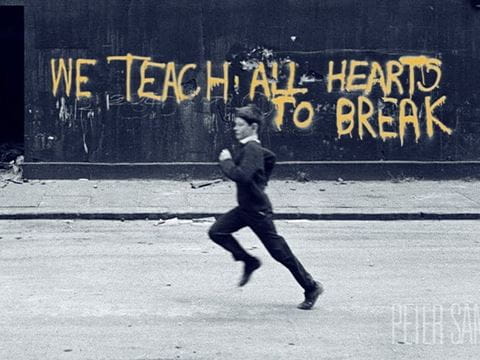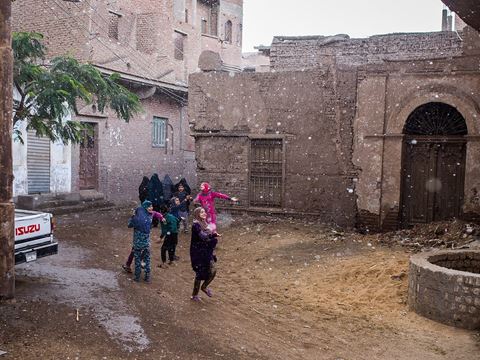.jpg?cx=0.5&cy=0.5)
Spotlight on Photography: A Bustling Kuwaiti Port Market
After the war in 1991, Kuwait faced a demand for consumer goods. In response, a popular market sprang up, selling merchandise transported by traditional wooden ships. Eager to replace household items that had been looted, people flocked to the new market and found everything from flowerpots, kitchen items and electronics to furniture, dry goods and fresh produce.
Until the 1950s a bustling marketplace called Souk Al Fordah operated along the seafront of Kuwait City. After the war in 1991, Kuwait faced a demand for consumer goods. In response, a popular market reminiscent of Souk Al Fordah sprang up in the same area, selling merchandise transported by traditional wooden ships. Eager to replace household items that had been looted, people flocked to the new market and found everything from flowerpots, kitchen items and electronics to furniture, dry goods and fresh produce. Claudia Farkas Al Rashoud, the first professional female photojournalist at the Arab Times, who has documented Kuwait for more than 40 years, captured the scene. “Nostalgia undoubtedly played a role in the popularity of the new market. Shoppers took pleasure in an experience that took them back to the days when wooden dhows discharged their goods from ports around the Arabian Gulf, India and Africa,” recalls Al Rashoud, whose books on Kuwait’s history and heritage showcase her pictures.

You may also be interested in...

Peter Sander's Spiritual Photography
Arts
For more than 40 years, British photographer Peter Sanders has documented communities across the Islamic world. Sanders discusses his legacy with us, including his inspiration and influences over the course of his career.
Capturing the Rain in Fayoum by Hesham Elsherif
Arts
I took this photo during a rainy day in November 2018 from the window of my family home in Fayoum, Egypt, located about 100 kilometers southwest of the capital. It hardly rains but a few times in the year in most parts of Egypt, and when it does, it is always something special, bringing Joy and happiness particularly for the local children.
Spotlight on Photography: Discover the Marshes of Iraq in a Visual Story by Wilfred Thesiger
Arts
History
“In the Marshes of Iraq” — November/December 1966